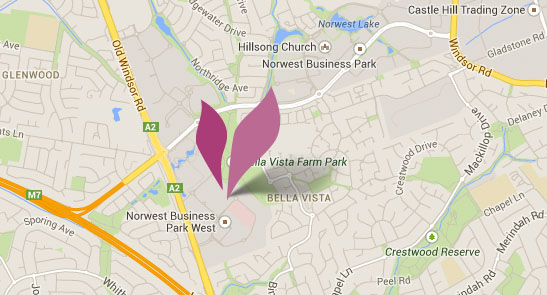Australian Breast Device Registry
Breast Implants in Sydney – Australian Breast Device Registry
What is the Australian Breast Device Registry, and how could it be useful for those considering breast implants in Sydney?
Plastic surgeons in Australian have been world leaders in establishing a registry for breast implants. We are one of the only countries with a Breast Device Registry. The USA and South East Asia, for example, do not yet have breast implant registries. However, for women who get breast implants in Sydney and across Australia, the Australian Breast Device Registry (ABDR) is an excellent resource.
The original Breast Implant Registry (BIR) was started in 1998; the federal government endorsed it in 2006, giving it ‘privilege’ status. Since that time, the Australian Society of Plastic Surgeons (ASPS) has maintained the registry and is required to report to the Federal Minister for Health and Ageing annually. This is a wonderful service for our community undertaken by ASPS, but one of the weaknesses of the BIR was that it only received information from those surgeons that elected to be involved (opt-in).
In an attempt to solve this weakness, an opt out registry was proposed (so the default position is that the surgeon is expected to complete the form and provide the information). Monash University was identified as a possible institute to establish and maintain the registry. Commonwealth government funding was secured in 2014 after the Federal Senate enquiry into the PIP crisis (2010). The ABDR superseded the BIR when it became operational in June 2015.
The ABDR is related to an increasing number of national registries worldwide through ICOBRA (International Collaboration of Breast Registry Activities). In an effort to develop an international registry, representatives from ASPS have met with leaders of many international Plastic Surgery Societies to determine a standardized set of information that would be useful to analyze problems with implants and their procedures. The original Australian BIR was recognized as being one of the most comprehensive national registries and Australian plastic surgeons are continuing to lead the world in this area.
The purpose of the ABDR is to provide a central database of information about the implants that have been used in patients across Australia. This means that if a patient has her implants registered through it, she will be able to find out about them at any future time if her surgeon becomes unavailable. She can also be notified by the registry if there proves to be a problem in the future with the implants that have been used.
The data provided to the registry will also be able to answer real world questions such as how long implants last, rates of capsular contracture and factors of influence, impact of texturing on devices, and ALCL risks.
Dr Gavin Sandercoe has been been providing information to the ABDR (and BIR previously) of all breast procedures that he performs since the day he opened his office in Sydney in 2010.
The PIP (Poly Implant Protheses) Crisis
While the chances of long term problems with particular implants are low, the PIP French implant crisis in 2010 was an example of the registry being able to identify women who had had PIP implants used. In this situation, it was revealed that PIP, an implant-manufacturing company, had been using cheap industrial-grade silicone instead of higher-quality medical-grade silicone when making implants, to increase its profits. Women who had received these implants needed to have them replaced or removed to avoid health risks. Those women who had registered their implants were notified.
This showed that the registry works, but, at the same time, the PIP implant crisis demonstrated many weaknesses of the current registry. It has been voluntary for surgeons to register their patients, and the uptake amongst surgeons has not been good enough. A fully developed and compulsory registry might have identified the issues with the PIP implants earlier, and would have made contacting affected patients easier.
The Government, ASPS, and Dr Gavin Sandercoe believe that having a good registry is important for our patients as it allows long term follow up. It’s in the interest of every Australian woman with implants to have them registered. When our patients get breast implants in Sydney, we strongly recommend that they register, just in case future problems arise.
What data is collected by the Australian Breast Device Registry?
1. Your personal details – name, address, date of birth, contact details. Your data is then de-identified as it is entered.
2. Your operation details – hospital, surgeon, date
3. Implant details – manufacturer, batch identification, serial number, size, shape, implant shell, implant fill
4. Reason for your operation and any prior radiotherapy
5. Operation details – includes date, operation type, incision sites, implant location, methods used to reduce the risk of capsular contracture, and post operative complication
6. Operation details – for revision surgery
Why is the Australian Breast Device Registry important to patients?
1. Your breast implant details are in a central database so that you can be alerted if a problem is identified with your implants
2. Your breast implant details are accessible to you if you change surgeons or your surgeon is unavailable if you need something done to your implants
3. Your data helps contribute to a growing knowledge on breast implant complications, and what strategies are effective in minimizing problems
What you can do right now?
By the end of November 2016 (when this page was written), over 300 surgeons across 200 hospitals were contributing to the ABDR. There are over 10,000 patients (and over 11,000 procedures) enrolled, and <1% patients have opted out.
If you have implants and are not sure if they’ve been registered on the ABDR, you can contact your surgeon to find out. You can ask that your implants be registered if they haven’t been. We recommend all women with breast implants in Sydney have their details/operations registered.
Patient Education Library




